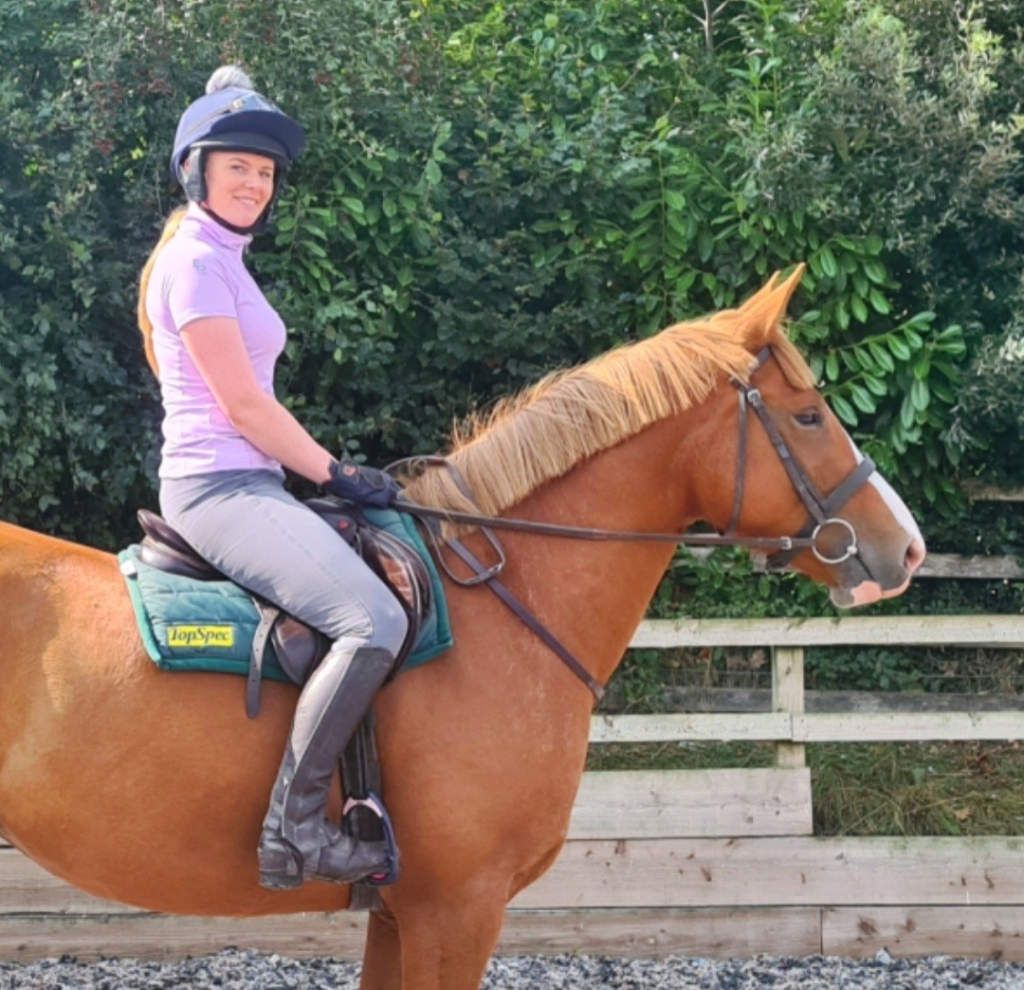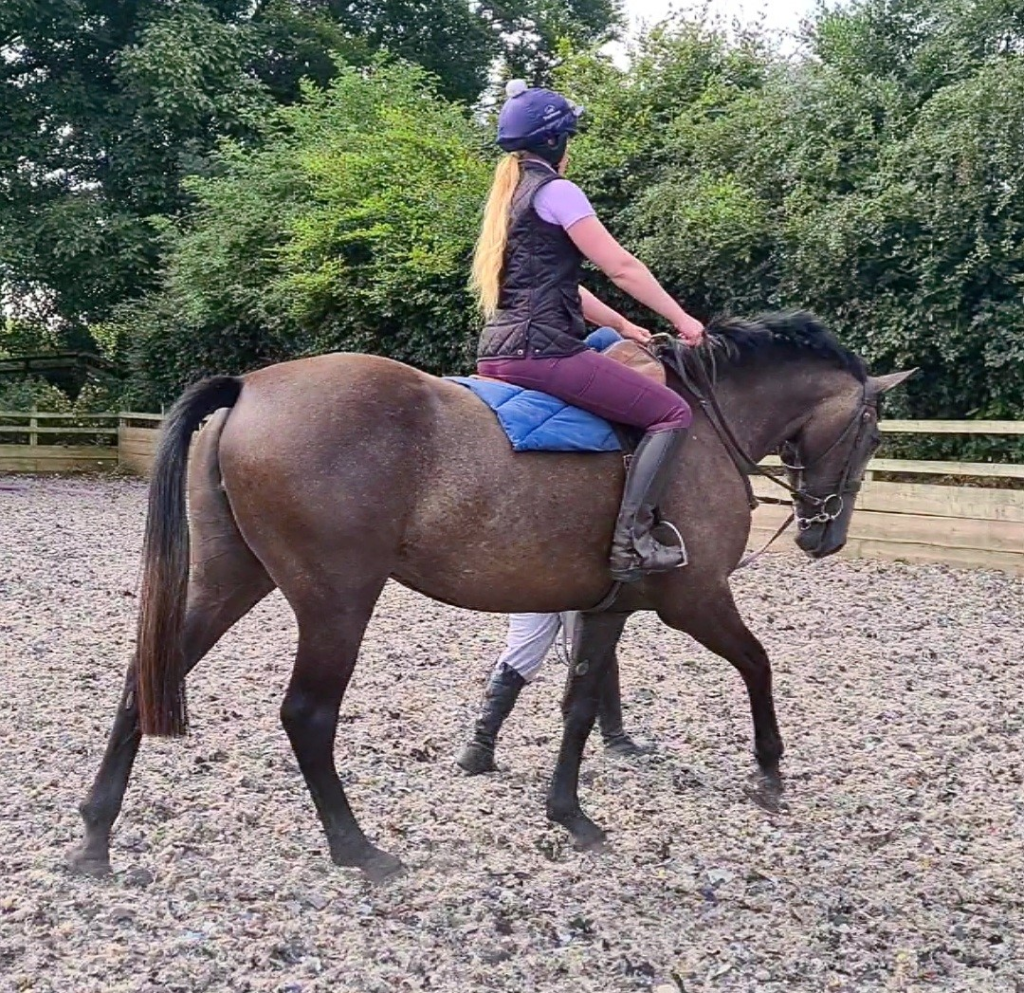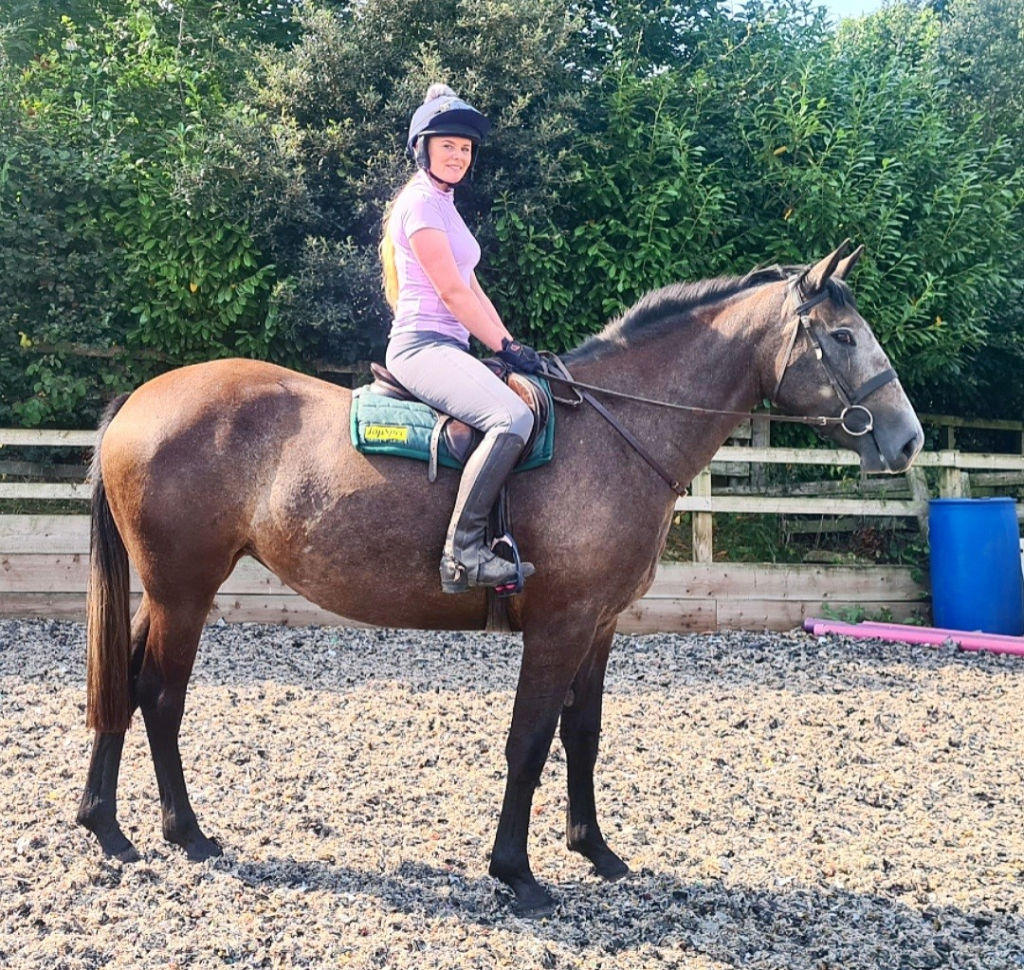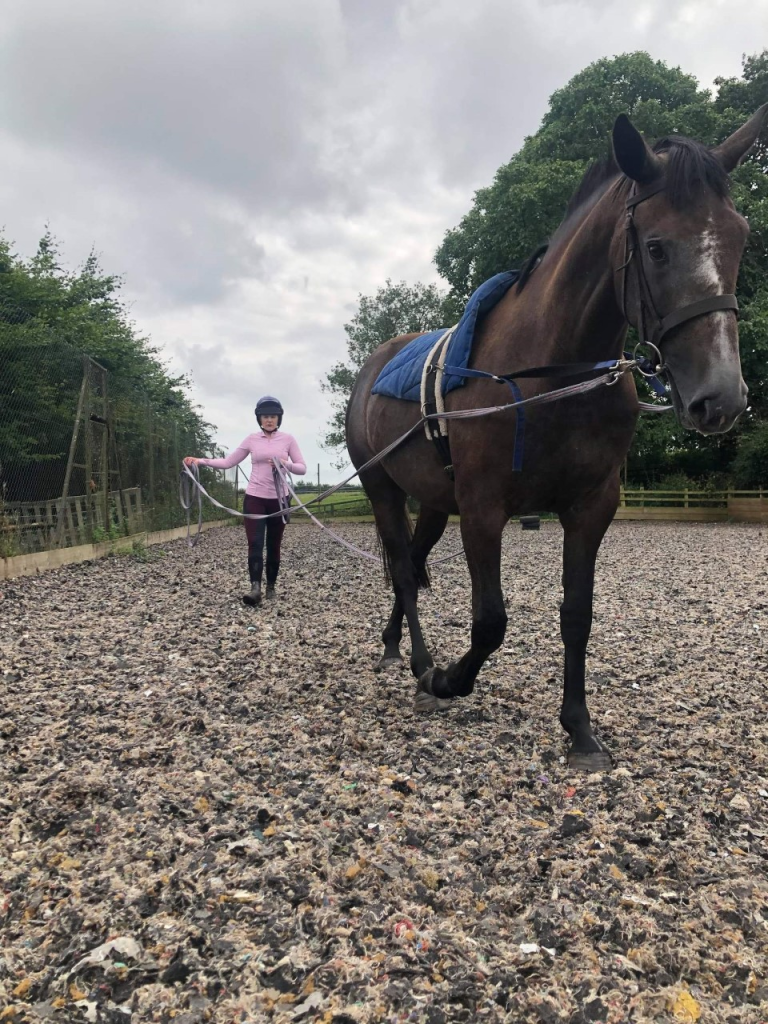
Article by Samantha Osborne
I believe in allowing young horses to have time to mature and socialise in a herd before starting to break them for ridden work.
As a child, I learned a useful tip from a lady working at a local Highland pony stud and I use it to start all horses I break in now. She used a lunge whip as an extension for her arm to feel all over the ponies. I have found that with horses that haven’t had much handling, it is an effective way to get them used to being touched all over and it saves accidents if they strike out at first to the new feeling.
As soon as they accept a head collar and are mannerly to lead around in the yard and arena, I begin bitting. I start off with a bit with keys and a basic cavesson noseband. I start off with the bit low so that they don’t object to having their ears folded forward. As soon as the bridle is over their ears, I gently raise the bit. I don’t like to leave them unattended in tack in case there is an accident. I know that some people stand them for hours in tack but I prefer to do little and often so that it doesn’t cause stress.
I use a roller and side reins before a racing exercise saddle and by the end of breaking them in I make sure they are happy in a standard saddle. I think increasing the weight of what is on their back in stages helps extreme reactions like cat-leaping and bucking. I take care not to over tighten the girth but make sure it is secure enough so that tack doesn’t slip and scare them.
A competent and calm ground person is key to getting the foundations right. I don’t like to see horses being grabbed tight. I think if you react and give the impression that something may go wrong, they tend to pre-act to this interaction. I use lots of positive reinforcement like verbal praise and neck scratches so that they learn to trust and enjoy the work. You can never do enough long-reining to make their mouth but I think lunging she be kept to a minimum if they are younger – especially canter work as it is too hard on their joints. I don’t think it does any harm to lean over them and be led around as the mouth is being made. I always lean over in the stable for a few days before sitting up on them. Each horse is an individual and I analyse their body language to make sure they are not anxious so that they can progress to the next stage. I also do lots of mounting block training at this stage so that they learn how to be mannerly at a mounting block as well as for a ‘leg up’.
As soon as the horse is confident with going forward, halting and changing direction on the long reins using the ropes and voice for aids, I start to lean over and sit up on them in the arena. If they don’t look back at me or put their back up, I begin halt, walk and trot work on the lead or lunge to build on what they already know. If they remain confident and responsive to the aids, I ask the ground person to unclip me and I ride independently. I keep sessions very short as they are weak and I don’t want to cause discomfort and mental fatigue.
It is vital to hack out more than going in the school as going around in circles in boring and teaches them to become less responsive to the leg. I always take a ‘bomb-proof’ lead horse so that the breaker gains confidence in traffic and when facing new obstacles for the first time like white road markings, cyclists and signposts. On the roads, it is easier to send them forward in straight lines. I always keep one hand on the neck strap so that I don’t pull on the mouth should they spook or do an emergency stop! I always do the first canter outside too as I think it is easier for them to canter in a straight line rather than in a tighter arena. Once the aid is recognised, I start to build on the canter education in the school.
Until they balance themselves and gain trust, I think it is helpful to stick with the same rider in the early stages of riding away; however, show horses are ridden by different riders as part of their education and so once they have grasped the basics, the horse can learn to work with a range of experienced jockeys.
I think it is vital to give breakers a rest after the initial breaking in process to let them reflect on what they have learned and mature physically. When backing them 6 months down the line, I think it is good practice to start them with long reining and recapping the basics again. I tend to have their teeth checked and a physio check them before progressing with their ridden work again. I alter tack to suit the individual at this stage but recommend sticking with a snaffle bridle and keeping an eye on the fit of the saddle as they change shape with work.
Samantha Osborne Biog
Samantha Osborne is an amateur, home produced rider who works full time as an English teacher but also works freelance in the equestrian media industry as a writer and a micro influencer. Samantha has experience producing horses to HOYS standard in the show ring but in recent years she has focused on chasing her dreams in the world of British Showjumping. She embraces a rounded equestrian life and has gained years of experience as a panel judge, has completed an Equine Science Behavioural Level 5 course, and often teaches or breaks in horses in her spare time.
Samantha’s motto is ‘Horse first, sport second’.
Instagram – @samanthaosborneequestrian
Website – Samantha Osborne Equestrian
Brand Ambassador for The Horse Life








